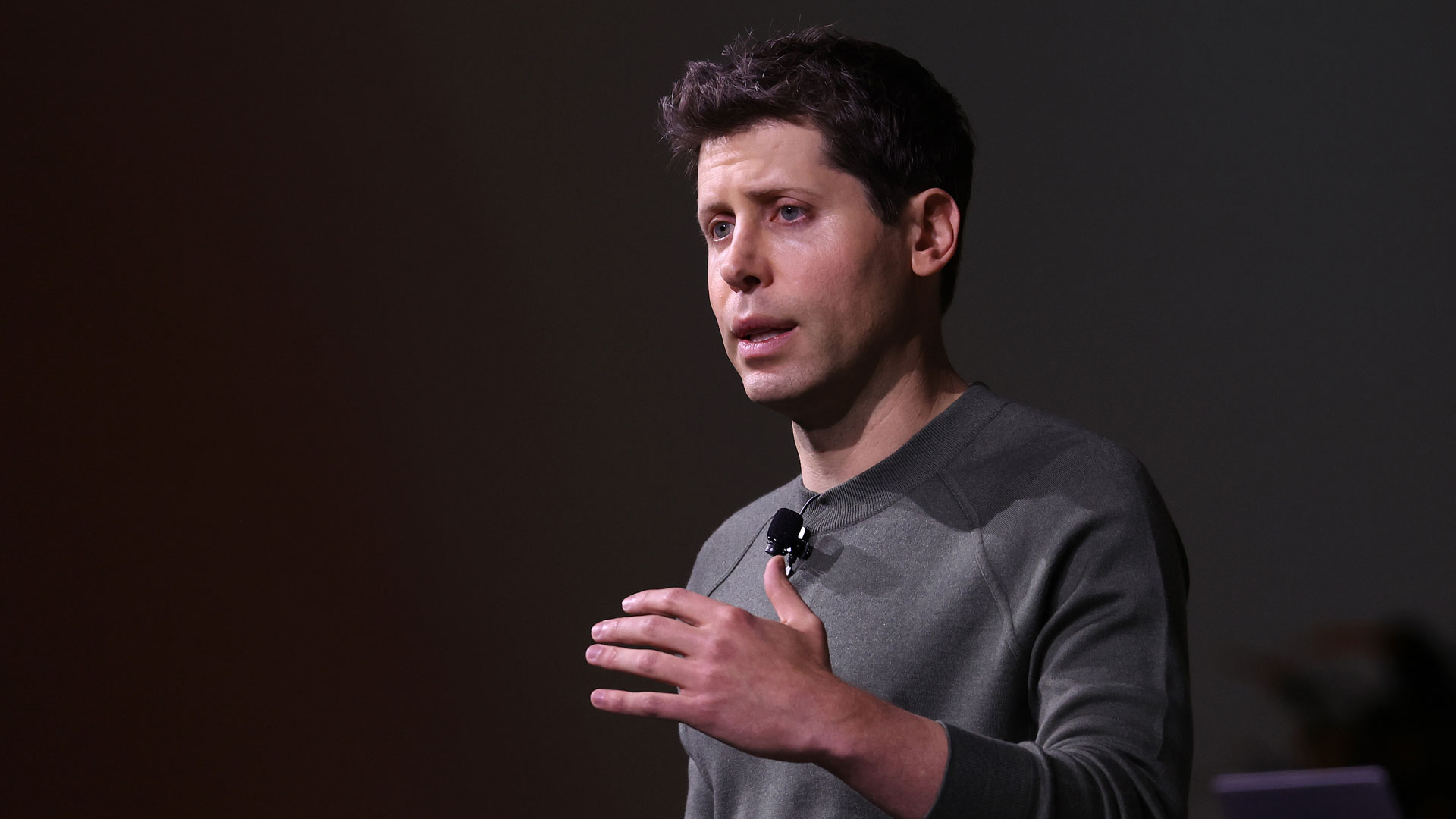Sam Altman's GPT-4o joke is perfect for all the wrong reasons
Oh, the AIrony!

OpenAI has announced a new flagship model for ChatGPT in GPT-4o, a faster and smarter architecture for its incredibly popular multimodal AI. The new model enables ChatGPT to interact through text, audio, and video, resulting in more context-capable, human-like interactions than ever.
But I don’t really want to talk to you about that. That’s something you can read just about anywhere online, repeatedly. There’ll be news articles in the hundreds about OpenAI’s showcase, how well GPT-4o is, why it’s better than the previous version, how it compares, and its best uses. Sure, it’s impressive, and more than a tad cool, but I want to talk about something else entirely.
You’ll have to bear with me, and I promise this will all come full circle in the end. But just for now, I want to talk to you, reader, about the concept of the perfect joke.
The perfect joke
Comedic legend George Carlin viewed stand-up comedy as both an art and a craft. Some would disagree, seeing comedy as nothing more than vulgar words and amplified bullying. But those people are morons and we should all collectively come together and beat them with sticks.
The crafting of a joke is a process of refinement, and an art form in and of itself. It’s taking the threads of something and weaving it into something different. It’s the spinning of a yarn into a yarn you can spin.
My comedy hero, Norm MacDonald, is widely known for his ability to tell a shaggy dog story like no other. His long, drawn-out, retelling of tall tales on late-night talk shows has become a key staple of his legacy, but Norm’s concept of the perfect joke was quite the opposite. According to Norm, “The perfect joke would be if the punchline and the setup were almost identical.”
Okay, so what does this have to do with OpenAI’s announcement yesterday? Admittedly, not a lot. But it has a great deal to do with something that happened afterward. Taking to X (Twitter, for those of us unable to move with the times) CEO Sam Altman would resurrect 2022’s hottest corporate social media meme (where companies would tweet a lone word that summarized their area of interest) with a single-word post of his own: “her.”
Sign up to receive The Snapshot, a free special dispatch from Laptop Mag, in your inbox.
While watching OpenAI's GPT-4o showcase, I wondered if I had anything amusing to say. Meanwhile, Sam Altman stumbled upon the perfect joke without trying.
herMay 13, 2024
The setup
“her.”
It’s a fun comparison to make. ChatGPT’s new multimodal features bring it closer than ever to emulating Samantha from the movie Her — and who wouldn’t want their own on-demand Scarlett Johansson?
In his blog, Altman said the new GPT-4o “feels like AI from the movies; and it’s still a bit surprising to me that it’s real.” He added: “Getting to human-level response times and expressiveness turns out to be a big change.”
Now able to see, hear, talk, and reason better than ever, GPT-4o (with the “o” standing for “omni”) is the most advanced step in natural human-computer interaction to date. ChatGPT’s latest update opens the door to more contextual conversations and showcases the remarkable progress made by OpenAI since the chatbot first launched in 2022.
It’s evolving. Not sentient, nor human, but becoming more human-like with every iteration.
Altman’s excitement isn’t constrained to the chatbot's “personification,” either. He ruminates on the wider possibilities branching off of ChatGPT’s advancements, stating that while OpenAI’s initial goal was to create AI to benefit the world, “it now looks like we’ll create AI and then other people will use it to create all sorts of amazing things that we all benefit from.”
Perhaps most exciting of all is how Altman pictures the ChatGPT of the near future, highlighting the potential of the software to gain “access to your information, the ability to take actions on your behalf, and more.” It’s sounding a lot like OpenAI is set to be everything that Microsoft’s Copilot wishes it was. I can really see an exciting future where we are able to use computers to do much more than ever before.”
The punchline
“her.”
Of course, the flip side to the setup is the punchline. In my best SNL Weekend Update impersonation: Good news! ChatGPT’s latest update brings the movie Her to life! Bad news! ChatGPT’s latest update brings the movie Her to life!
I haven’t seen a piece of media so dead set against showcasing eye contact since catching See on Apple TV. It’s a pretty miserable world, where everybody is isolated and walled off. Loneliness appears to be the norm, exemplified by an earlier scene taking place in a packed subway car. Looking into the background it appears that people are engaging with one another until you realize they’re all individually talking to their virtual assistants.
Why is this one of the scariest tweets I’ve ever seenMay 13, 2024
The film depicts a world where genuine person-to-person interaction is somewhat falling out of favor, replaced by creepy attachments to AI companions — with the movie’s lead becoming romantically entangled with his proto Rabbit r1/Humane AI Pin-housed AI operating system. Whose job, by the way, is to write personalized letters on behalf of other people, furthering that vision of complete interpersonal detachment.
It’s not even like the film’s premise is all that far out, either. According to WhatsTheBigData, the “AI Girlfriend” market is already booming — valued at $2.8 billion and expected to rise to $9.5 billion by 2028. Which isn’t all that shocking when you consider one in five young people surveyed said that they’d be interested in engaging in virtual companionship.
Of course, there’s also the film’s outcome to contend with, let’s just say not everything ends well. Aside from an unsettling AI resurrection of philosopher Alan Watts, humanity is eventually abandoned, outgrown, and left behind. Something which could be catastrophic for us as we rely more and more on AI as the technology expands.
Outlook
It’s a playful post, sure. However, it’s a particularly strange comparison for Altman to make, as OpenAI seems invested in everything except making AI girlfriends. Then again, its decision on that front may be wavering slightly with the company now being open to “exploring” NSFW content within its chatbot.
But then again, contradictory behavior for those leading the charge on AI just appears to be how things work. While they lead masses of software developers and engineers to develop high-functioning, human-like AI models such as GPT-4o, they seem to be stuck on GPT-1.
A petition to pause giant AI experiments was signed by Elon Musk, who would then go on to claim that there’s a 10 to 20 percent chance of AI destroying humanity before green-lighting X’s own large language model (LLM), GROK.
Even Altman himself has called for US regulation on AI, stating "I think if this technology goes wrong, it can go quite wrong...we want to be vocal about that, we want to work with the government to prevent that from happening." All of this was said while his company lobbied to water down regulation in the EU.
On one hand, tech seeks to create a tool that can assist, entertain, and even understand us on a deeper level. On the other, there's the looming threat of how far this evolution can go and how disruptive it could become. Altman's one-word tweet, "her," encapsulates both the promise and the peril.
Like my comedy hero, I too am just an old chunk of coal — at least in my mind. However, if somebody like Sam Altman is capable of accidentally stumbling across Norm MacDonald’s vision of the perfect joke, then maybe I can also.
AI is here to change the world.
AI is here to change the world.
It might not be as amusing, but it’s worth thinking about.
More from Laptop Mag
- This tech can resurrect lost loved ones, but the AI afterlife is far from paradise
- You're a bot, and I am too: Internet conspiracy theory is 49.6% true
- The darker side of the AI girlfriend trend: It's not about a date, it's about your data

Rael Hornby, potentially influenced by far too many LucasArts titles at an early age, once thought he’d grow up to be a mighty pirate. However, after several interventions with close friends and family members, you’re now much more likely to see his name attached to the bylines of tech articles. While not maintaining a double life as an aspiring writer by day and indie game dev by night, you’ll find him sat in a corner somewhere muttering to himself about microtransactions or hunting down promising indie games on Twitter.










